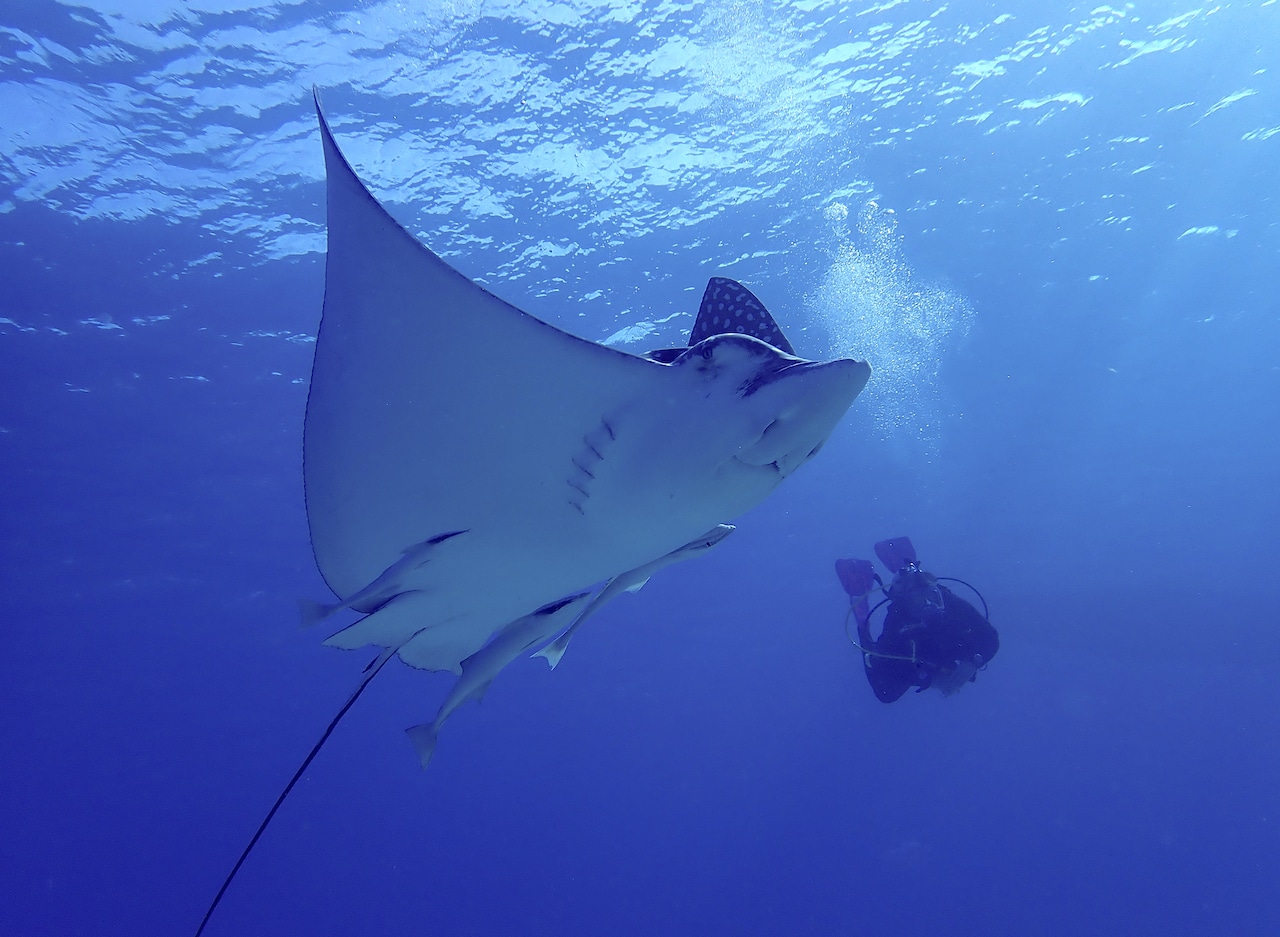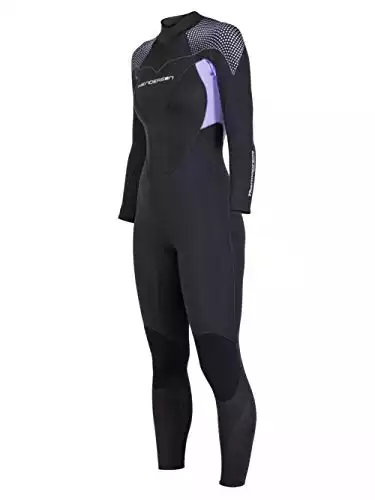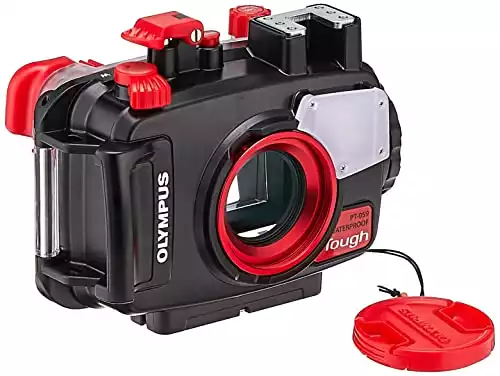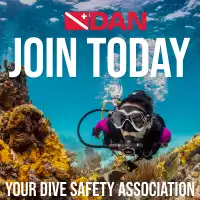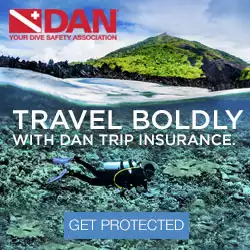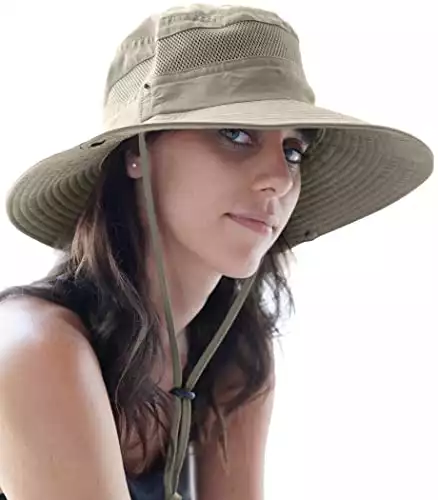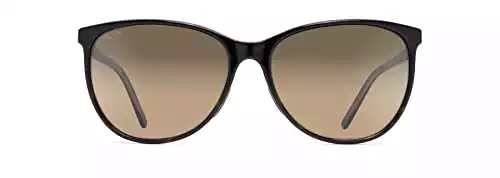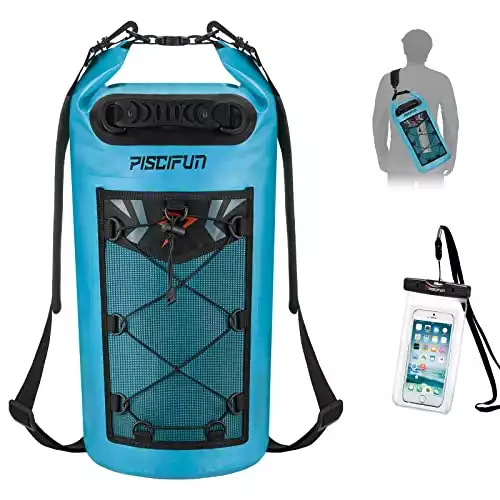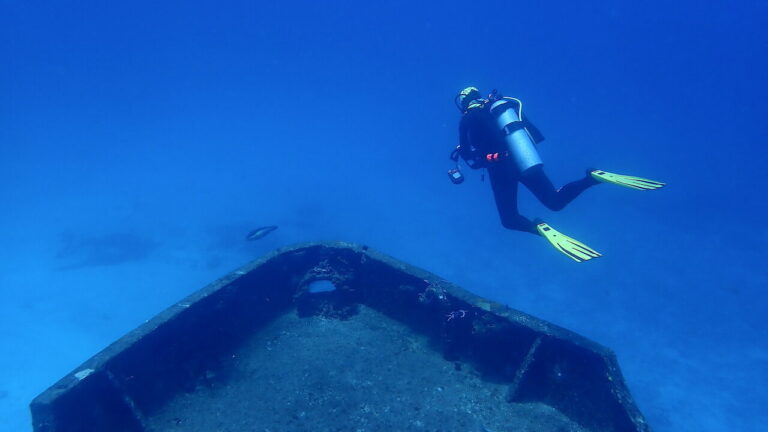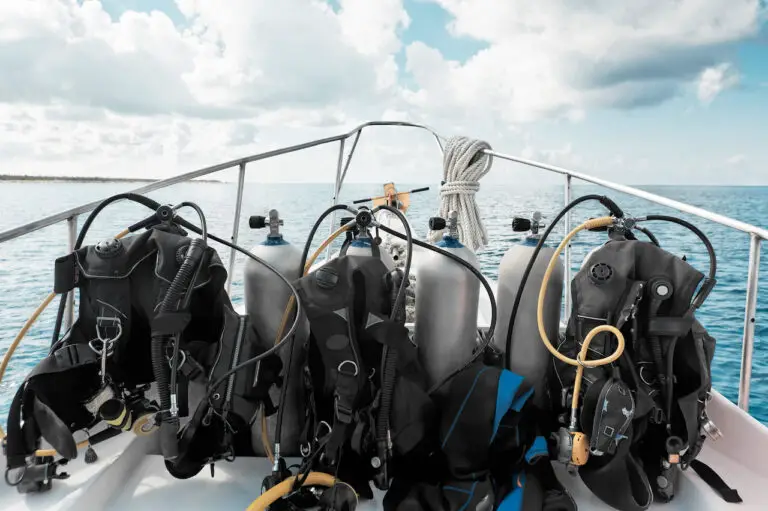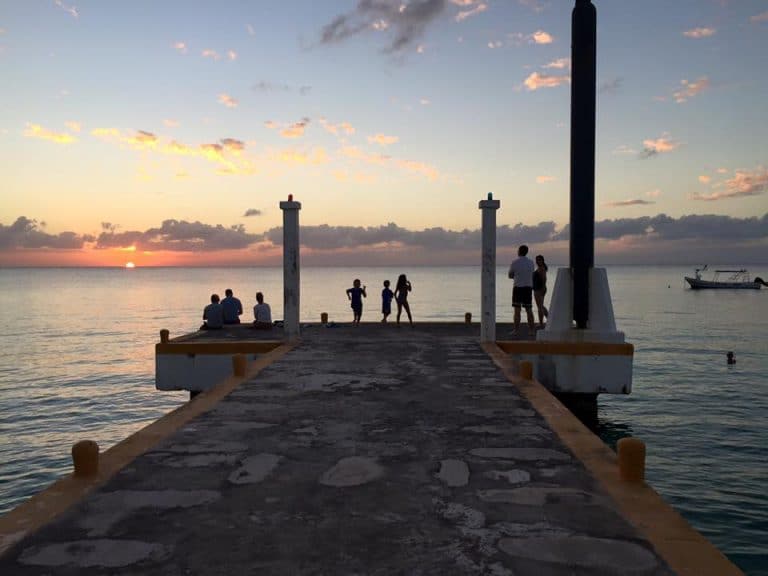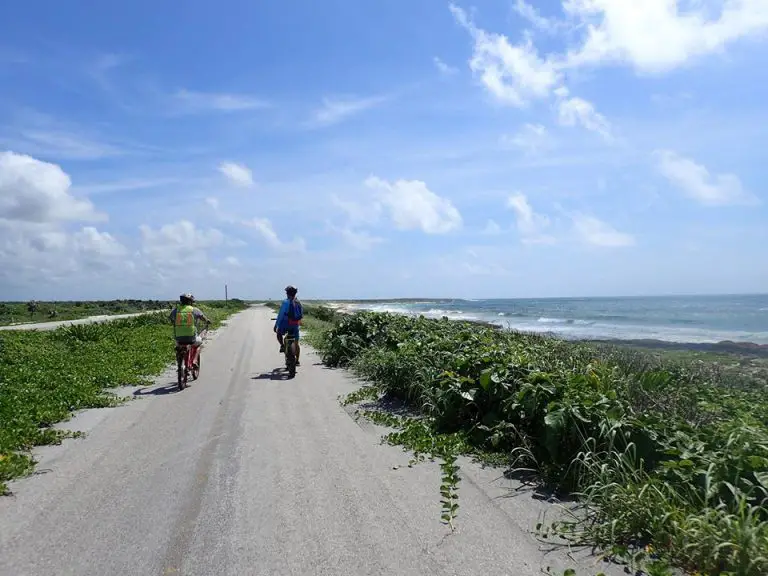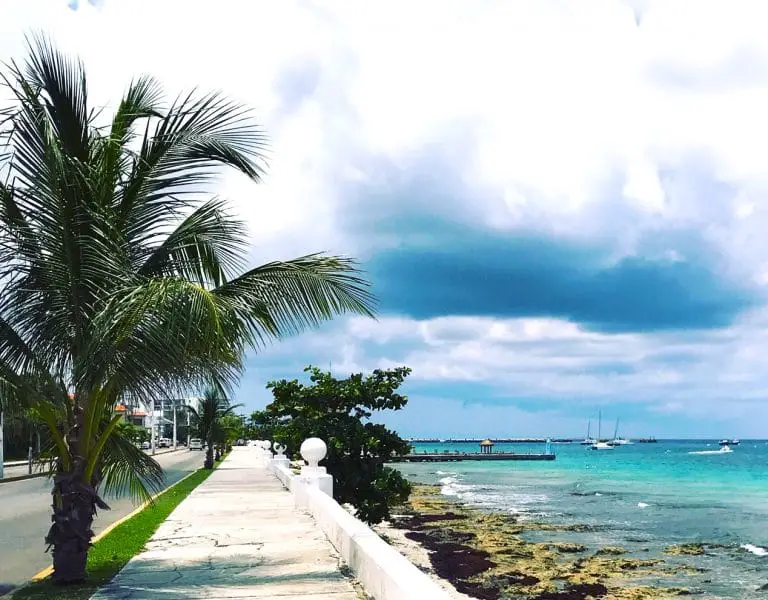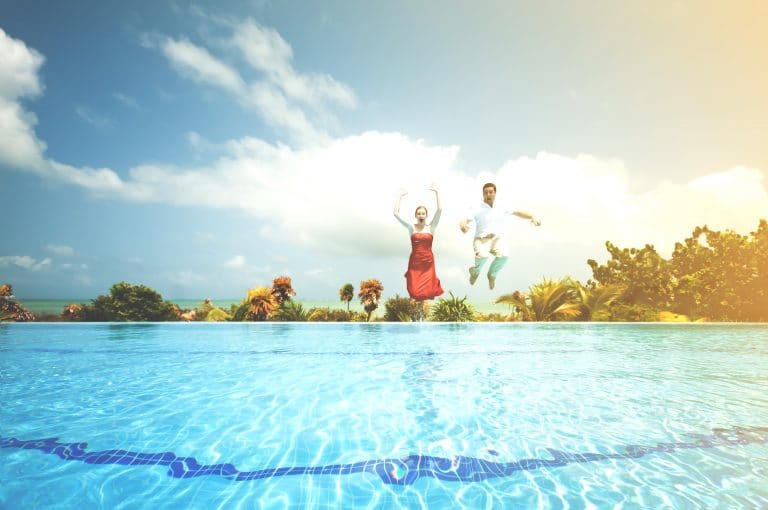Scuba Diving in Cozumel: Fantastic Fun All Year Round
If you’re wondering if Cozumel island is good for SCUBA diving, book your dive vacation now! Rest assured from this dive master and longtime resident of Cozumel, it’s not just one of the top destinations for diving in the Caribbean, it’s truly one of the best places to scuba dive in the world.
Scuba diving in Cozumel, Mexico is fantastic all year round, due to its incredibly high visibility in the water, warm temperatures, robust diving community, and safe and easy drift diving for beginners to experienced divers.
Divers love the great variety of dive resorts, dive operators, and mostly gorgeous dive sites, including deep walls, coral pinnacles, colorful coral gardens, and the great biodiversity of marine life that flourishes throughout the national marine park reserve.
Prices for open water certification courses (including tanks and rental gear), dive packages, accommodations, and local food options are very reasonable, as well.
All of the above make the island of Cozumel – in the safe and heavily traveled Quintana Roo state in Mexico – an overall great value for a top-notch scuba diving destination.
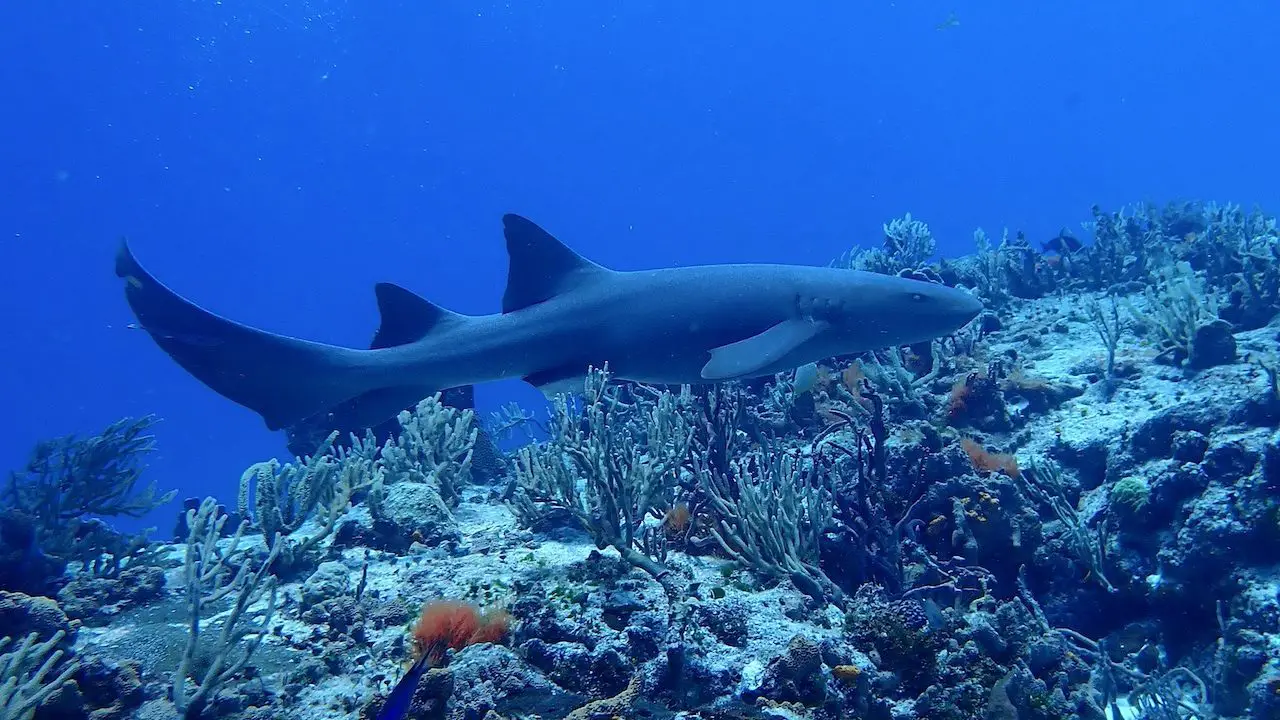
Scuba Diving in Cozumel is a Must for any Bucket List
Living and SCUBA diving here year-round, I’m spoiled by Cozumel’s consistently good diving conditions – namely the clear visibility and very warm ocean water temperatures. If you have a dive certification, you’ve got to add “dive Cozumel” to your short list.
Even the rare opportunities to dive the outer Great Barrier Reef and the pristine dive sites in Cuba’s Jardines de la Reina did NOT surpass the consistent quality of the Cozumel reefs, for me.
The beautiful marine life includes various sea turtle varieties, nurse sharks, spotted eagle rays, moray eels, loads of colorful tropical reef fish, barracuda, ocean triggerfish, and more.
The best dive sites in Cozumel are within a protected national marine park, called the Parque Nacional Arrecifes de Cozumel. On any two-tank dive you’ll encounter lots of fantastic marine life, perfect for
You’ll find lots of flamboyant cleaner shrimp, sea snails, and sea slugs leading the pack, as well as some bonafide nudibranchs for serious eagle-eyed divers.
Perhaps the most special critter of all is Cozumel’s endemic “splendid” toadfish (sanopus splendidus), found only among local dive sites (see more about this special fish below).
Cozumel has one primary wreck dive site, the C-53 Felipe Xicotencatl, an easy wreck dive accessible all year, except when currents are particularly strong.
And we also have a good and growing shore diving culture.
In certain seasons, you can also do day-trip excursions from your home base here if you want to try diving with bull sharks in nearby Playa del Carmen (winter), or snorkeling with whale sharks in nearby Isla Mujeres (summer).
Playa del Carmen – just a short 40-minute ferry ride away – is also home to the Yucatan peninsula’s famous series of fresh-water cenotes, so you could easily take a day trip to experience guided cenotes cavern diving at any time of the year, and get the full Cozumel diving experience.
A Note on Local Cenotes Diving in Cozumel
Cozumel has several natural cenotes (subterranean fresh-water caverns) throughout the island, but most are not considered safe for recreational diving.
The cenotes in Cozumel are tucked away and not promoted as good dive spots, given their small size, far less clear water, and relative danger. Some very experienced tech divers on the island are known to explore a few cenotes on the island, and may arrange cavern dives with well-qualified divers, but it is not at all common (nor generally recommended).
However, visiting divers who are fans of cenote cavern diving can scratch that itch with an easy day trip over to Playa del Carmen, via one of Cozumel’s ferries.
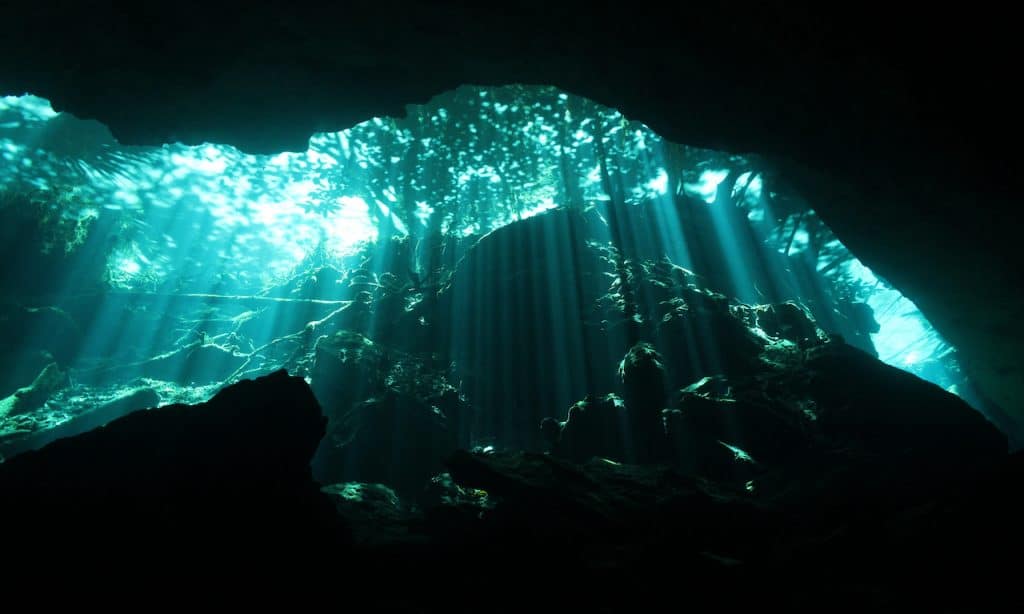
For good, accessible cenotes diving, it’s Mexico’s mainland series of cenotes between Playa del Carmen and Tulum are much larger, safer, and a better quality diving experience.
Find a good local shop to show you the ropes (literally) and guide small groups through some of Quintana Roo’s famous cenotes, like Chac Mool (pictured above). I went with Yucatek Divers and had a great time. (Yucatek also runs good excursions to snorkel with the whale sharks from July – August, approx.).
But meanwhile, it’s really diving in Cozumel’s excellent coral reef system and protected national marine park that is known far and wide to offer some of the best warm-water scuba in this part of the globe.
Plus, the island is relatively inexpensive and super fun.
If you’re really into scuba diving, then Cozumel has to be on your bucket list.
Cozumel Scuba Diving has Superior Conditions All Year
There are beautiful and fun diving destinations, worldwide – luckily for those of us who sometimes live for our next dive trip.
The thing is, you often have to time those trips just right to get the right combination of good conditions, the star marine life, and airfares and hotel rates that are within reach of your dive trip budget.
But more likely, you go when you and your family or friends can arrange dates and have the time off from school and work.
And you might have to compromise on conditions, or maybe just miss seeing those minke whales or weedy sea dragons – two of my own real-life examples from when I traveled all the way from Mexico to Australia, but alas, we could only go when it was just a few weeks off the best season for these animals.
If you plan on a dive trip to Cozumel, though, many of those concerns fade away.
Aside from a rare patch of rough weather – which can happen anywhere – diving here is fantastic all year round, and for all levels of experience.
Trust me on this. I get to go diving here every week of the year these days, and no matter the season, I still always come up with a huge grin on my face, and a memory card full of cool underwater photos. Every time.
Consistently Warm Caribbean Water for Cozumel Diving
First of all, the stunning blue and turquoise water is warm and clear with great diving visibility, all year round.
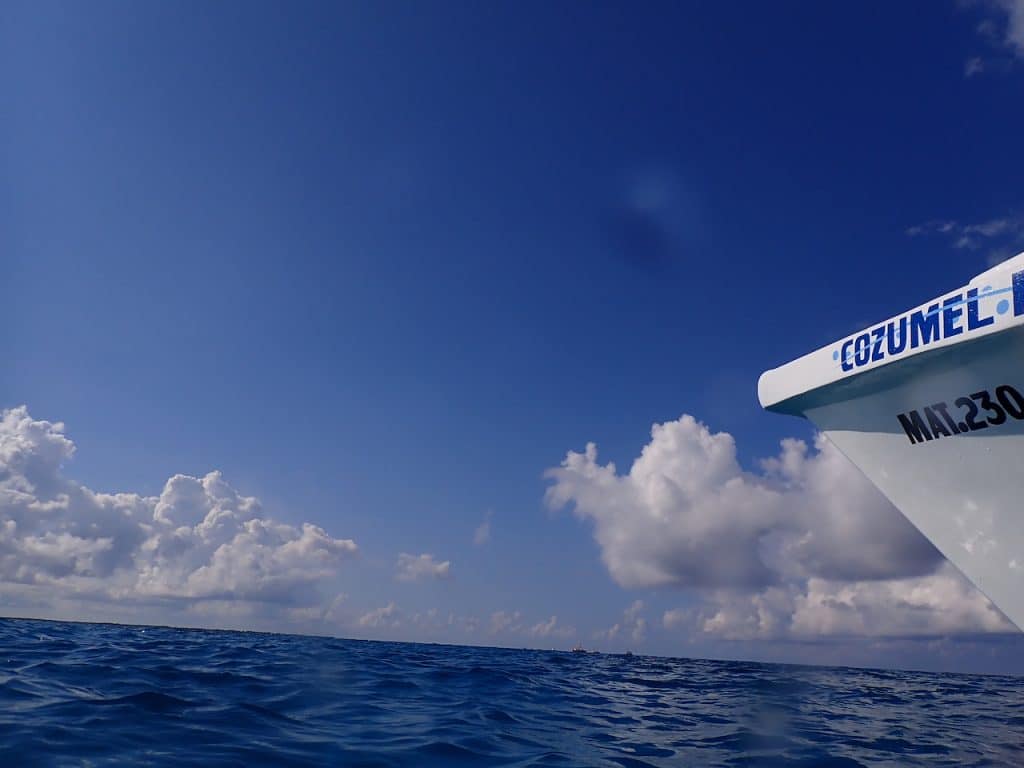
Cozumel Scuba Diving Water Temperatures
- The local water temperatures range from 83F/28C during our Summer months from about July through September.
- Diving water temperatures go down to 78F/25C in the coldest few months of the year – usually February-March.
- During the rest of the year, the water temperatures in Cozumel hover around 80F/26C.
Some divers here on the north-eastern coast of Mexico are comfortable diving in just shorts and a rashguard, though the thermal protection of a full wetsuit is the norm.
As a general rule, the best wetsuit for scuba divers in Cozumel is a full 3mm wetsuit, or a “shorty” style wetsuit with a full dive-skin or rashguard garments, underneath.
Divers who do a lot of repeat dives or just tend to get cold faster usually opt for a full 5mm wetsuit in Cozumel’s slightly colder season, from December through March, and will often layer in a light hooded vest.
When I gear up in February with socks, cozy hood, and my 5mm Henderson thermoprene-pro (which is, btw, the MOST comfortable wetsuit I’ve ever worn in my life), I sometimes get teased by folks who’ve just arrived from the snowy lands of the Northern US or Canada. Understandable!
But then again, so be it! There’s no shame in wearing the proper thermal protection – just the opposite, in fact, if you recall your training… I just want to make sure I stay warm – and free from discomfort and any distractions – so I can thoroughly enjoy each and every 60 min.+ dive.
But again, most divers are very comfortable in a good 3mm full suit, or a shorty with a long skin to protect arms and legs from sun, and also from the occasional underwater brush with fire coral or microscopic jellies that might be in the current (not common, but…you never know).
The overall air climate in Cozumel Quintana Roo Mexico is pretty much always still sunny and very warm, too, so the surface intervals are a great chance to sit in the sun and warm up. It’s a good idea to bring a light rain jacket with you in case of short showers, and also to block some of the local breezes, especially when you are out on the water.
See my full guide to wetsuits in Cozumel post, for help choosing the right wetsuit(s), thermal layers, and other essential boat garments you’ll likely want to pack.
Outstanding Visibility for Cozumel Diving All Year Long
Perhaps the most noteworthy benefit of scuba diving in Cozumel, Mexico is the consistently clear visibility.
Most dives in Cozumel’s national marine park boast visibility of at least 100ft+ (30+meters), and more like 200 and beyond.
Of course, there are a handful of random days when the current is strong and things get churned up a bit. But that is definitely not the norm, here.
To me, that’s a huge advantage. For example, I was thrilled at the chance to dive at Jardines de la Reina in Cuba, but I was not as thrilled with the murky visibility, and the occasional difficulty in seeing our dive guide.
As the excellent Dive Training magazine puts in this good article about diving visibility, here:
One of the most important considerations for diving is the “viz”. Clear water can make a mundane dive site shimmer in glory. Conversely, even the best coral reef can be a disappointment when it’s clouded by a veil of murky water.
Dive Training Magazine
The odds are in your favor to be on the shimmering and glorious side of things. Again, of course, barring the occasional weather event.
Guide to Cozumel Drift Diving – Tips and Tricks
Many new divers who visit Cozumel – or at least divers from places where “drift diving” is not the norm – occasionally express some nerves or discomfort when it comes to this practice of diving along with a steady ocean current. And I’ve seen our local drift described as super strong or even intimidating, from time to time.
While the currents can run a little “too” fast on occasion, that is really not what it’s like on a day-to-day basis.
Most Cozumel dive sites have a gentle drift, carrying you along the dive with very little effort. It also gives you something to softly brace against if you want to face the current and stop to take a photo or examine a certain feature of the reef.
There are times when hovering like that is indeed far more difficult, though, so be aware of some of the basic strategies for managing yourself and your buoyancy in a current.
All dives here are guided, and your divemaster will always deploy a marker buoy before the group ascends to the surface, so your boat captain can easily find you, and the many boats in Cozumel can clearly see the buoys and avoid the divers underneath!
For more tips and tricks on drift diving in Cozumel for beginners, head over to this post next!
I strongly recommend visiting your local dive shop or browsing this Amazon link for a good personal surface marker buoy (SMB) – a.k.a. safety sausage – on a spool.
Divers should eventually get to a point where they are comfortable deploying an SMB underwater, or once you safely ascend, just in case the currents pull you away from your group. In the meantime, review this post on general Cozumel diver safety, here.
If you never get out ahead of your divemaster and pay attention to sticking with your group, though, you will be completely fine.
The easiest ways to manage your buoyancy control while drift diving in Cozumel currents
- The current is stronger at the surface, so descend quickly if your ears are fine, and then stay low to the reef. As you ascend slowly from a deep dive, remain low in the water column.
- Turn 180 degrees and physically face into the current, then gently use your fins to kick moderately, holding yourself in one place. Kind of like using a treadmill. And btw, watch the fish for pointers – many of them are doing this alongside you!
- Look for a coral head, or a drop-off after a stretch of coral reef, then duck down behind it, allowing the current to pass over you. Even a small formation, and allowing the current to pass overhead, is an easy maneuver that will save you energy – and save you from getting out ahead of your divemaster and group.
- Cozumel is a protected marine park, so no reef hooks, sticks, or knives are allowed. These common crutches for buoyancy or control in a drift certainly would come in handy if the drift is unusually strong for some reason. Instead, try to duck down and find a NON-coral or sponge area, and use one finger to lightly hook onto a rock or the sand. It really doesn’t take much to keep you in place and wait for your divemaster. Ideally, you shouldn’t touch even the sandy bottom, as there are living critters all through the sand. But better still if you’ve used the previous two tips well before this point, so you stay in control, and let your dive master lead the way at all times.
But again, a strong current that is difficult to manage is something that does happen here and there, but it is not like the current is ripping every day. Most of the time, drift diving in Cozumel is awesome!
You get dropped off right on your divemaster’s chosen spot (selected based on interest and the conditions that day). Then you enjoy a nice, lazy drift with little to no effort, covering long swaths of the beautiful reef. And then you get picked up right where your group has done its safety stop.
So easy! Doesn’t get much better than that.
Cozumel Diving for High Biodiversity and Incredible Marine Life
It’s hard to “rank” marine life, as all of our underwater encounters are special, in my opinion.
Cozumel has a great variety of marine life, though, from spotted eagle rays, nurse sharks, and loggerhead sea turtles to mini macro favorites, like mantis shrimp, clown crabs, juvenile trunkfish, nudibranchs and sea slugs.
I’ll start with two of the rarest stars of the marine park, and move on from there.
Cozumel’s Endemic Splendid Toadfish
The Cozumel Splendid Toadfish is so-called because of its unique and flamboyant coloration.
Unlike other toadfish species, the splendid toadfish has a bright blue and grey body, with black and white stripes and markings, opaque light blue eyes, and impressive flashes of brilliant yellow edging all of its eight fins.
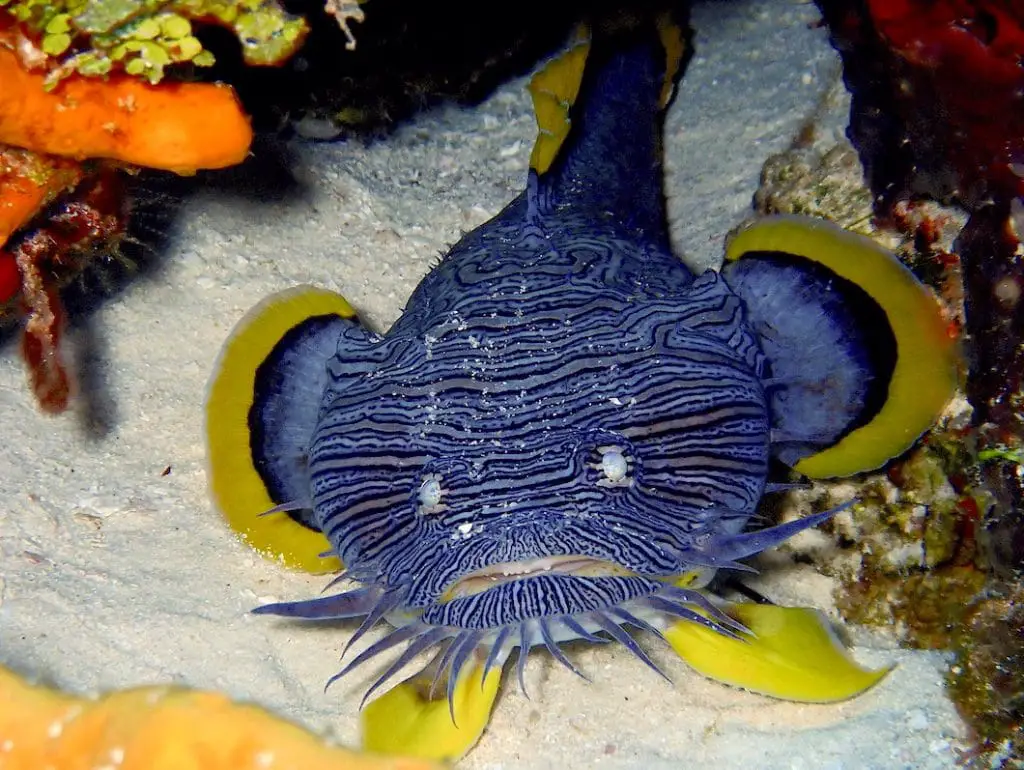
The splendid toadfish is endemic to this small region, meaning it was originally only found along the reef sections here in Cozumel, and nowhere else in the world. Finding your first splendid toadfish here is kind of a right of passage!
Splendid toadfish typically hide out in small low caves where the reef meets the sandy bottom, or in cracks and crevasses in the coral reef.
Being predators that rely on the ambush, splendid toadfish often have their faces peeking out of these hiding spots, so can be detected by the ‘barbels’ protruding off of their “chins” – almost looking like spiky beards.
For more in-depth information on this wonderful local fish, including a video capturing its odd mating call, please read this related feature article.
Spotted Eagle Rays are Cozumel Scuba Diving Highlights
Spotted Eagle Rays are Cozumel’s most majestic large marine animal.

While not as large as manta rays, spotted eagle rays are still large yet very graceful creatures, with strong ‘beaks’ used to dive into and root around in the sandy ocean floor, while hunting for crustaceans and other small prey.
Their white and black markings make a striking visual, especially against the clear and deep blue of the ocean water. Getting an up-close view of them eating along the shallower, sandy areas is also a real treat.
Eagle rays avoid divers, generally, but often if there is a mild current and/or they are on a mission to hunt, they will go about their business and let you watch. Just don’t charge them or move too close or they’ll take off abruptly, ruining your encounter and making you *quite* unpopular with the other divers in your group.
Sharks Encountered While Scuba Diving in Cozumel
Cozumel has sharks (you can read more about that here), including nurse sharks, blacktip reef sharks, and – more so in nearby Playa del Carmen – bull sharks.
The vast majority of sharks found at our common dive sites though are Atlantic Nurse Sharks. It is typical to see at least a few if you dive here for at least a few days.
Nurse sharks are typically about 4-6 feet long (1.25-1.8 M) and tend to hunt at night, so scuba divers will often spot these sharks resting under rock outcroppings along the shallow reefs, or smoothly cruising along the mid-to-deep wall dives.
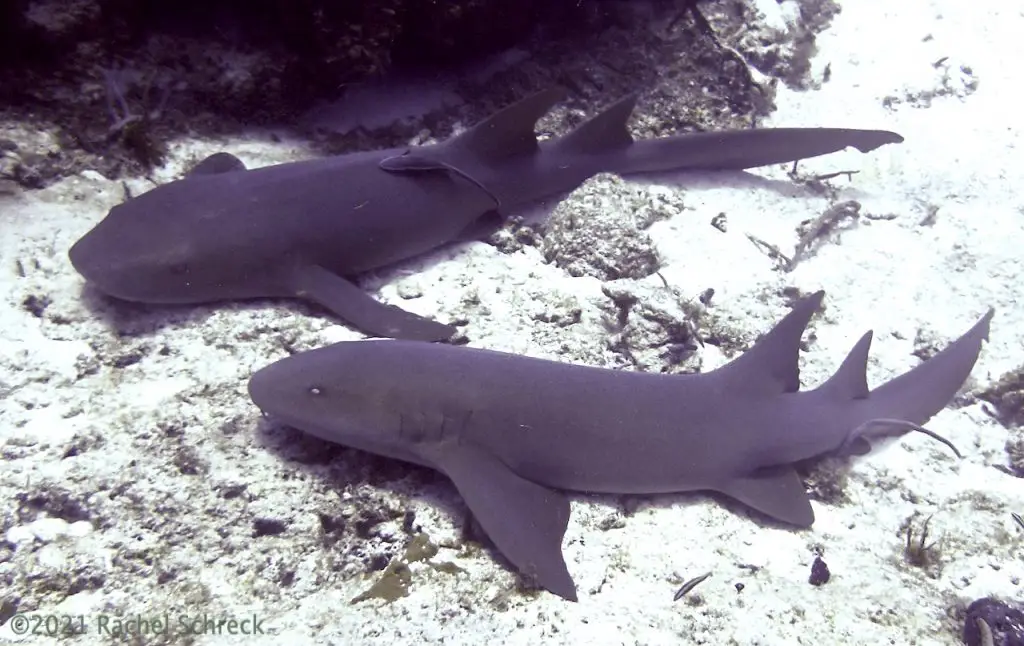
Nurse sharks are not dangerous to divers, and tend to eat small bottom animals like lobsters, crabs, and conchs, though they will also eat other crustaceans and fish, etc.
They are sharks, though! So keep a healthy distance, and don’t get cute and try to wake them up for a photo op.
These wild animals do have strong jaws (strong enough to make quick work of lobsters and hard conch shells!) and multiple rows of small but sharp teeth.
There’s no need to fear the nurse sharks when diving, though! Normally, they will ignore you or avoid you.
Tropical Reef Fish Are Abundant on all Cozumel Dive Sites
While scuba diving in Cozumel, you’ll see a beautiful array of colorful reef fish that reside here.
Every dive can be filled with parrotfish, angelfish, trunkfish, filefish, butterflyfish, damsels, triggerfish, barracuda, groupers, blennies, gobies, and more.
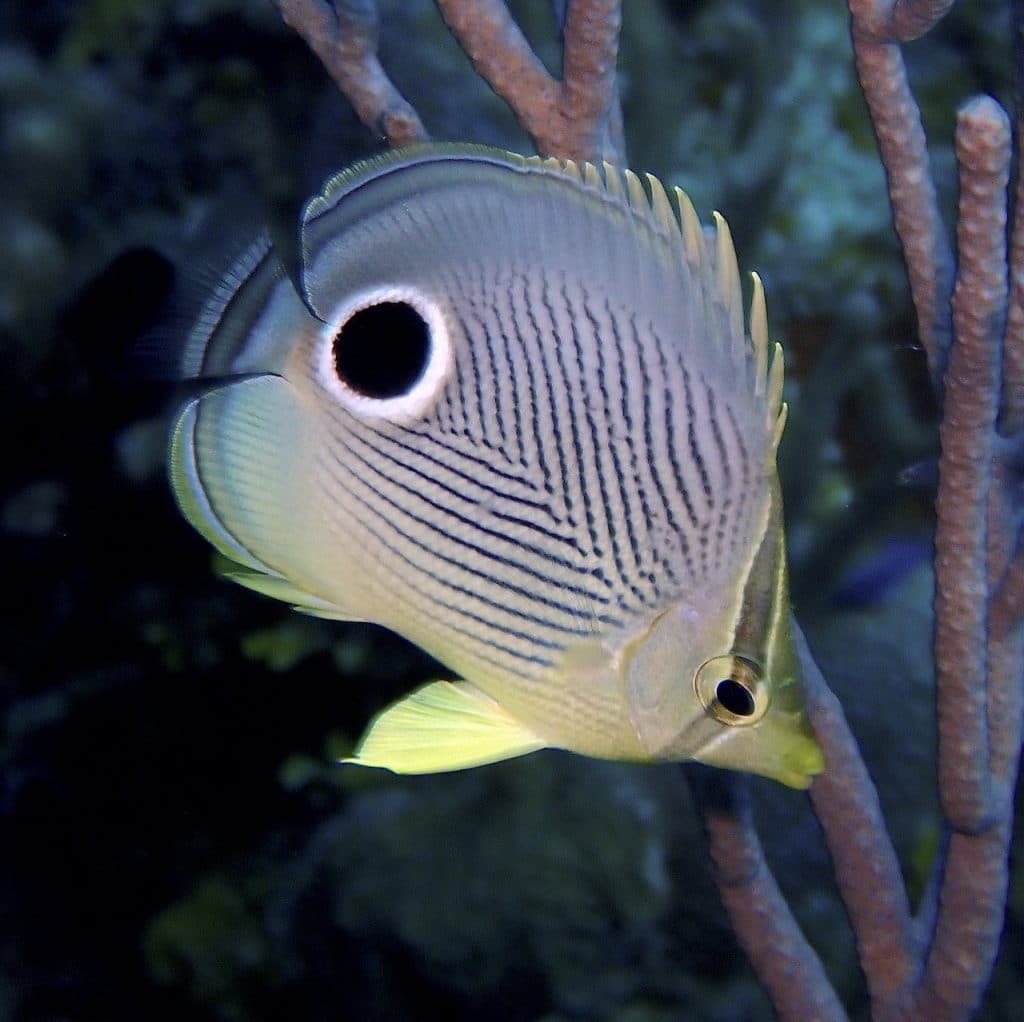
Best Cozumel Dive Photography
After many years of diving, I still love seeing sharks, big sea turtles, and eagle rays. No question.
But I’ve also become much more interested in the thousands of tiny macro marine creatures that divers can see on every dive.
Cozumel is not always celebrated for its macro life, but it should be. There’s an abundance of macro life to find and photograph.
If you’re into – or want to get into – taking your own diving photos, be sure to check out this post with some helpful tips, and then check out the full list of recommended
Cleaner Shrimp in Cozumel
Cleaner shrimp are fascinating, and as the name implies, they have a symbiotic relationship with their host (a giant anemone, for a very common example) or a fish or larger animal that will seek them out at a “cleaning station” to get various algae or parasites picked off of them.
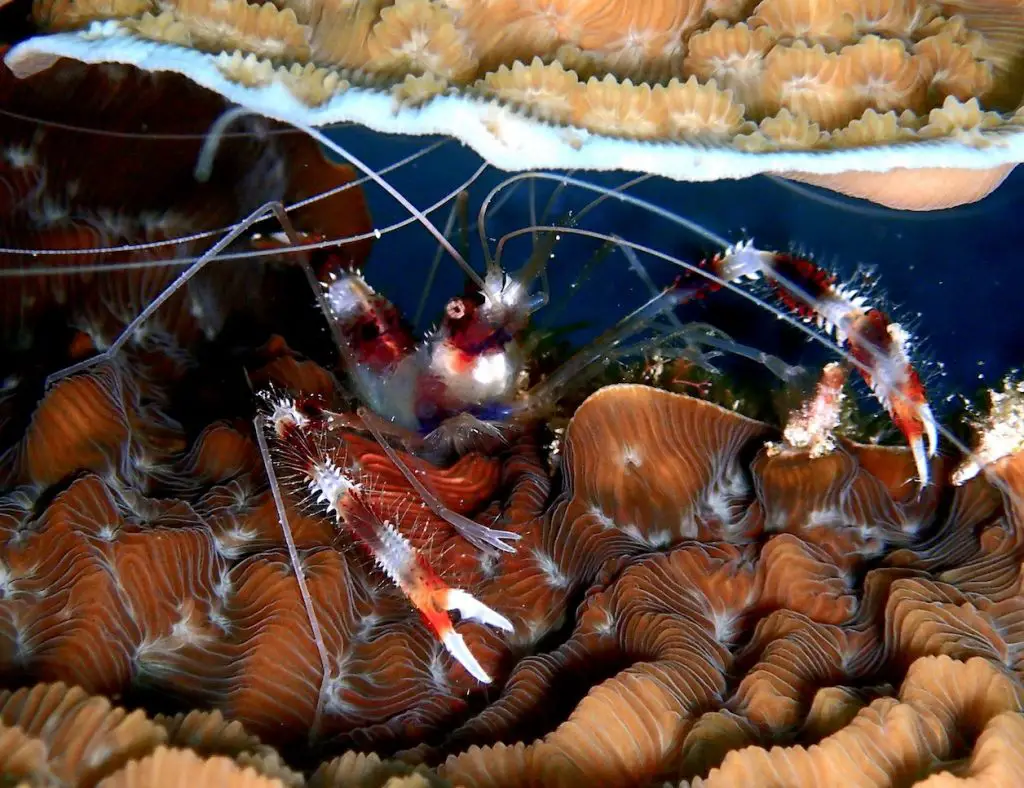
The image above shows one of the more plentiful cleaner shrimps in Cozumel, the banded cleaner shrimp. These are very easily found in purple sponges, and in and under other various coral types.
The image below is of a spotted cleaner shrimp. These spotted cleaner shrimp are not rare but are a bit harder to spot than the banded variety. They most often visit common giant anemones, as seen in the picture.
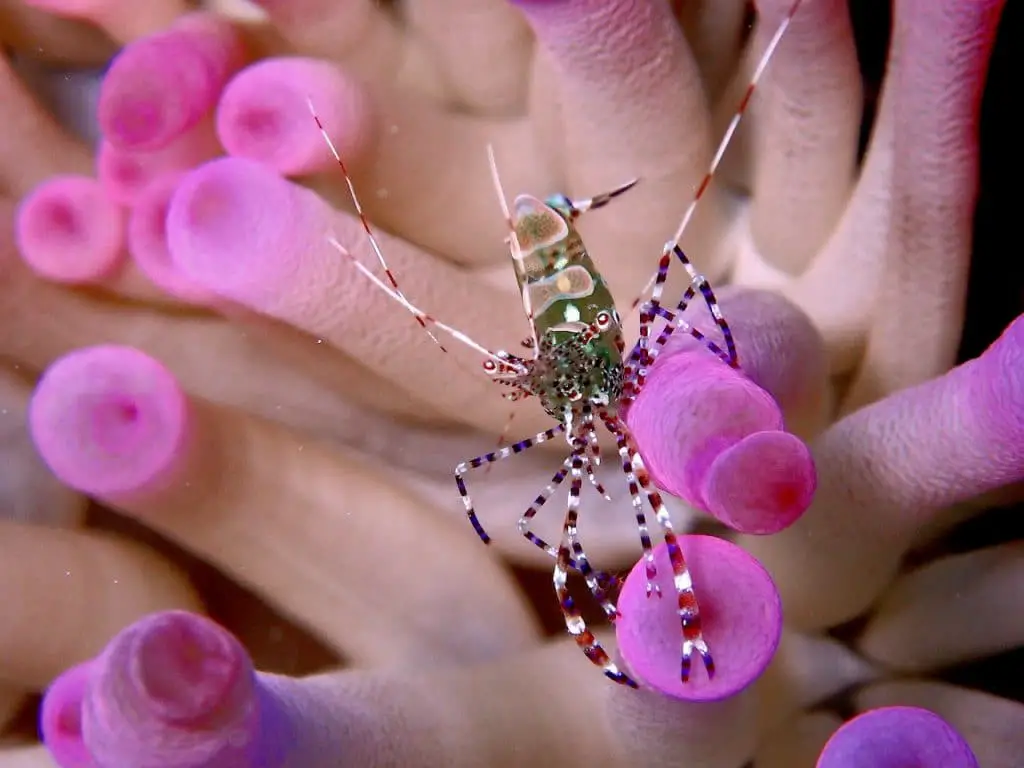
Other types of marine shrimps common to Cozumel diving include the sun anemone cleaner shrimp, the scarlet cleaner shrimp, and the squat anemone shrimp.
For more on these local shrimp species in the marine park, check out this post on Cozumel’s shrimp types right here.
Sea Snails, Slugs & Nudibranchs
One of my favorite groups of macro life to get the full experience in Cozumel is the category of sea snails, and their related sea slugs and nudibranchs.
Sea snails, like the very common flamingo tongue snail (cyphoma gibbosum), seen below, have shells for protection, and often feed on the branches of gorgonian corals.
These corals are also where they lay their eggs, in neat orderly rows.
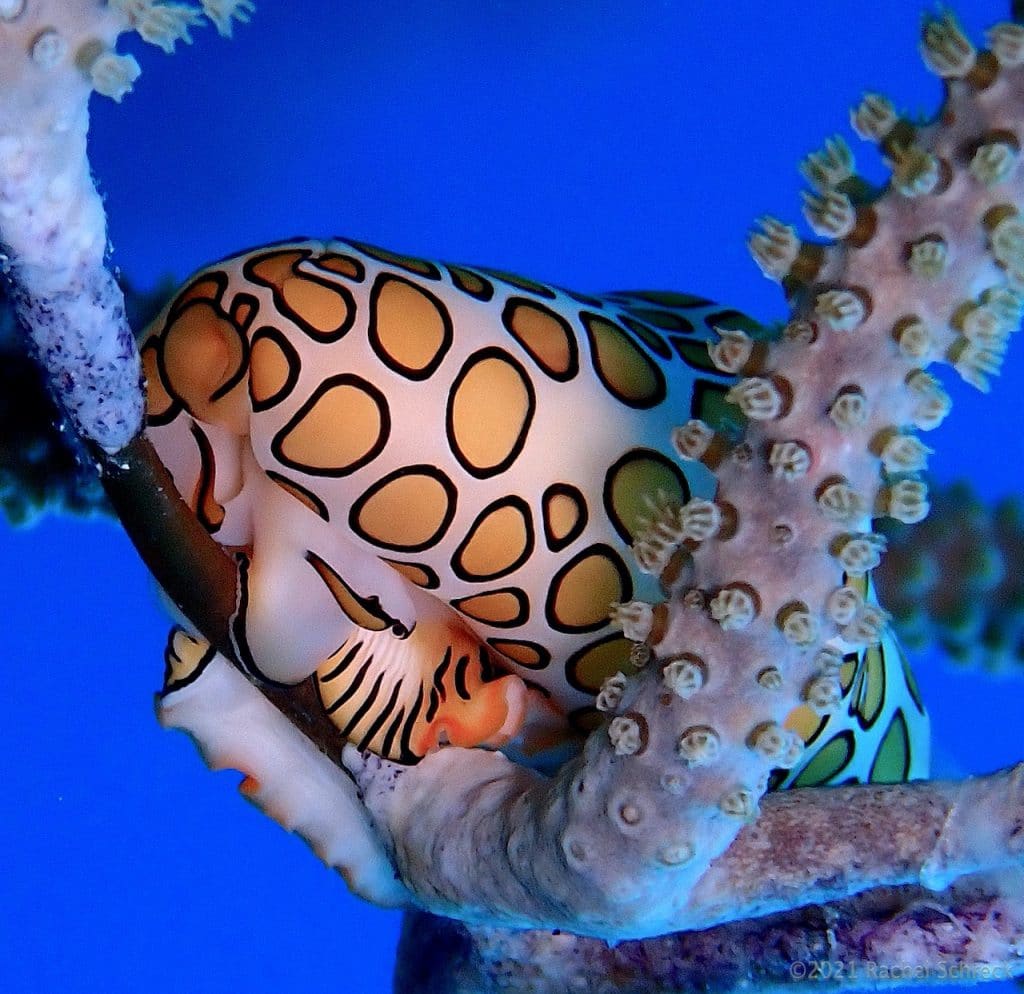
Flamingo tongue sea snails are plentiful, here.
Sea slugs and nudibranchs, on the other hand, are beautifully colored slugs without any protective shell.
The most common sea slugs in Cozumel are in the “Elysia” family, namely two favorites, small brightly colored painted elysia, and the pretty elysia crispata or “lettuce slug” (a.k.a. “lechuga” in Spanish) seen here.
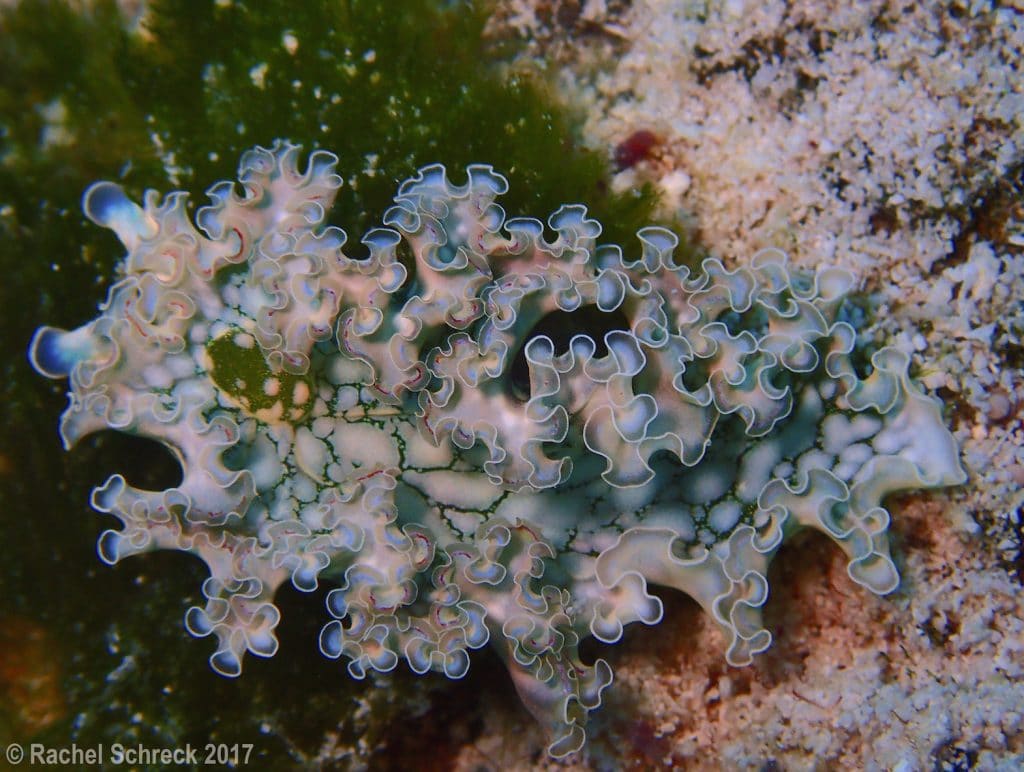
For more on macro and tips for finding common hiding spots for macro marine life in Cozumel, visit my guest article on Mozaik UW Camera store’s blog.
And for a closer look at Cozumel’s sea slugs and nudibranchs, read this post.
Ideal Underwater Camera for Cozumel Diving
If you’re ready to start diving and snorkeling with an underwater camera, this easy and affordable setup is a good value, and great for beginners, but will also grow with you.
And it’s been used to take all of the underwater Cozumel photos on this post, and this entire website!
For my full post on diving photography in Coz, and a full no BS review of our quality UW camera gear, hit the green button, below.
- Easy to use
- Easy to pack
- Easy on the wallet
- Durable, waterproof, dustproof
Night Diving in Cozumel – Octopus, Basket Stars, Eels, King Crabs and More
Finally, those of you who love night dives will be really happy to try one here, and it’s one the best place for first-timers, too.
Most dive shops in Cozumel can rustle up at least one weekly boat dive at night, if they have enough people, or depending on your dive shop, you can just do your own shore-entry night dive.
There are several shallow reefs your dive operator might choose to dive for a fantastic night dive. For the best experience, they’ll look for a shallow dive site that’s not considered an advanced dive, and one that doesn’t have a strong current that day.
Particular favorite night diving locations are Paradise Reef (formerly a common daytime dive, but now often reserved for night diving, since the newer cruise piers effectively closed it for day diving), Yucab, San Clemente, or Cedral Pass.
Our local Cozumel night diving spots are relatively easy (as long as the current is not unusually strong), and again, the visibility here is great, making it an ideal place for new divers to get used to diving in the dark.
In fact, a common method among dive companies here is to do what is more accurately known as a twilight dive, gearing up and entering the water just as the sun is setting. This allows you to ease into the darker environment as your eyes adjust.
It’s also a great chance to see the neat changes that occur as the sun is setting. Some “day shift” critters get ready for bed (or get themselves tucked away and hidden), while the “night shift” of large crabs, lobster, big green morays, and octopuses come out to hunt around.
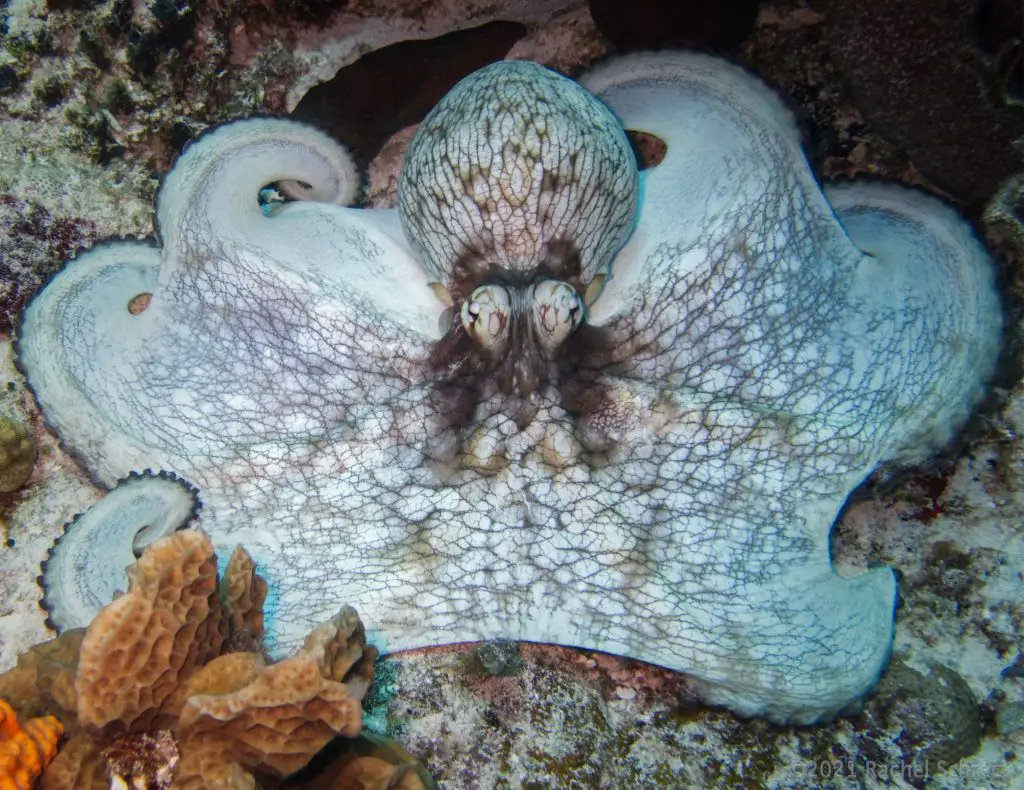
Night dives here are also the perfect chance to try and find giant basket stars and witness their nocturnal feeding behavior. Unfurling from their daytime, balled-up posture, these long-limbed echinoderms stretch out five branched arms and filter feed in the current.
For more information on our local basket stars, and resident sea stars, see this related post, here.
Some special sights at night may also include a full view of a splendid toadfish (link to feature article) out of its hiding spot.
At night, splendid toadfish are more likely to be exposed when they’re out on the prowl for food, with the cover of darkness.
The Best Scuba Dive Sites in Cozumel
While many dive sites in Cozumel are popular and highly recommended, the best dive site can vary depending on the conditions on a given day.
Sometimes, the dive sites that are located in the southern-most part of the island catch strong winds coming from the southwest, making the water choppy and the current stronger than normal – and even if the current’s mild, the visibility might be lower than we’d like. Other times, those dive sites are fine, but winds from the north are making sites like Punta Tunich or Cedral a little rough.
Therefore, it’s important to have a knowledgeable and experienced dive master who can make the best decision based on the weather, currents, and other factors that can impact the dive. If he or she suggests a different dive – even at the last minute – it’s usually for the best reason: so you’ll have the best and safest scuba diving experience.
So when people ask me what my favorite dive site here is after many years and thousands of dives’ worth of Cozumel dive experience, my answer is “Yes!” lol
That said, there are some dive sites in Cozumel that are consistently highly recommended and widely regarded as some of the best in the world.
One of the most popular dive sites in Cozumel is the Santa Rosa Wall. This site is known for its beautiful coral wall and stunning drop-off into the depths of the ocean. With an abundance of marine life, including barracudas, moray eels, and turtles, divers can expect to see some of the most amazing underwater scenery imaginable.
Another top-rated site is Palancar, which is actually a section of reef with a series of well-known Cozumel dive sites: Palancar Gardens, Palancar bricks, Palancar Horseshoe, and Palancar Caves.
This cluster of Palancar dive sites is considered one of the most beautiful coral reefs in the world.
The Palancar sites can be ideal for beginner and experienced divers alike, as the dives typically start in relatively shallow waters with a nice solid sandy bottom, and then gently slope down toward the more deep and lush reef formations.
Palancar is home to an impressive array of marine life, including colorful tropical fish, eagle rays, and nurse sharks, as well as lots of cool macro critters in the more shallow reef and vast expanses of sandy ocean floor and grassy areas.
Columbia Reef is another must-visit dive site in Cozumel. This reef is home to a wide variety of corals and sponges, as well as a diverse array of fish and other marine creatures. Divers can expect to see schools of snappers and grunts, as well as barracudas, angelfish, and even the occasional sea turtle.
Finally, Cedral Pass is a site that is known for its vibrant coral formations and an abundance of marine life. Divers can expect to see everything from stingrays and octopuses to reef sharks and turtles. The currents at this site can be strong, so it’s important to dive with an experienced guide.
While these are some of the most popular (and most written-about) Cozumel dive sites, it’s important to remember that any dive site your dive master picks will be cool, and usually the best based on conditions that day.
Cozumel is full of amazing dive sites, and no matter where you dive, you’re sure to have an unforgettable experience.
Cozumel Diver Safety Information and Services
Trained and Experienced Local Dive Professionals
It’s hard to imagine a population with more divers, divemasters, and dive instructors, nearly all of whom have trained in Oxygen administration and other key methods of SCUBA diving first aid. During your stay in Cozumel, you’re sure to meet dozens of dive fanatics, and trade stories of beautiful dives here and around the world.
[Heck, even my dentist is a diver, so she knew just what I meant when I was nervous about getting an air pocket (and potential “tooth squeeze.” ouch!) in my new filling replacement. She’s also a great dentist, so no such air pocket was made. For more info on getting some dental work in paradise, check out this post on Cozumel’s growing medical tourism.]
All local boat captains and dive guides maintain current training with rescue techniques, as well as DAN’s (Divers Alert Network) diving safety and first aid courses, oxygen administration, hazardous marine life first aid, and training to spot the signs of anyone who might need post-diving hyperbaric treatment at a local hospital or any other medical attention.
All dive boats should carry a DAN oxygen kit, and there are strong networks and cooperation among local captains and on-shore beach club pier managers, so if an emergency were to arise, help will be on the way as quickly as possible.
These are basic safety precautions, and any worthwhile dive operation should make it clear to you that they follow all of these procedures, and be more than happy to answer questions about their supplies, training, and emergency methods.
Definitely ASK these dive safety questions before you book with a new dive shop!
For more on how to choose the best Cozumel dive shop for you and your group, read this post next.
Cozumel’s Multiple Hyperbaric Chambers and Dive Medicine Expertise
The island is well-equipped with multiple hospitals that staff bi-lingual specialists in diving medicine and hyperbaric medical science.
Cozumel has at least 3 fully functioning and staffed hyperbaric chambers on this one small island.
There are small teams of doctors, nurses, and even many fellow divers who train as volunteer “chamber handlers” who are trained in dive medicine and recompression treatments.
This all makes any chance nitrogen “hit” or case of decompression sickness, a.k.a. the bends, much easier, faster, and more comfortable to treat. Fast and effective examinations and chamber treatments make diving in Cozumel, Mexico just that much safer.
The most important piece of dive gear in your kit.
Cozumel Diving is Ideal for Dive Education and Divemaster Internships
For all of the above reasons, this island is a wonderful place if you’re coming to Cozumel to try an introductory “discover scuba” class as a pure beginner, or to do your scuba certification course, an advanced certification, or any of a number of specialties.
There are numerous dive sites in Cozumel that are suitable for beginners, advanced divers, and tech divers, alike.
Cozumel is an excellent place to do your PADI dive master and SCUBA instructor training, especially if you plan to go on to a busy career in diving and dive instruction. There are dive instructors who teach for SSI, NAUI, and other professional dive organizations, as well.
This island is visited by divers of all skill levels throughout the year.
Divemaster candidates flock here to take internships or the apprenticeship approach to training and are rewarded with loads of great training and exposure.
Exposure not only to warm-water and drift conditions and a good variety of spectacular dive sites and marine life, but also – and more importantly – to a large, diverse international scuba diving client base that comes for recreational diving, as well as all the various courses and training.
In-training divemaster candidates and assistant instructors here typically get lots of opportunities to assist in live classes, and daily “on-the-job” training for what it really takes to lead a busy life as a divemaster and instructor in a lively, active market of customers from different countries.
Our best dive sites include deep walls, partial caverns, and shipwreck sites also make it a good environment to pursue the fast-growing craze of “tech diving.” Many local shops now offer Tech 40 and Side Mount instruction, and some others, like Cozumel Marine World, are staffed to provide the more advanced technical / tech-deep curriculum classes.
Deep walls and infamous sites like Maracaibo and Devil’s Throat can be done by advanced recreational divers, but tech deep students will also have a good introduction, as well as some practical applications to put their new tech skills to real use.
Large, Friendly and Fun Cozumel Diving Community
Cozumel is a beautiful, charming island known for many things – perhaps especially for being full of beautiful, charming, hardworking, friendly, and funny people. It’s just a great hang, period.
Non-divers, couples, and families can have an awesome vacation here, too, whether its a rainy day in Cozumel, or our typically bright sunny weather.
As you can see above, though, it’s an incredible destination for diving. It’s no wonder that Cozumel diving is the lifeblood of the island, in many many ways. So whether you’re an experienced diver or thinking about an introductory discover scuba diving class, choose a good Cozumel hotel and get your butt down here.
If you poke around the rest of this site, you can also learn more about Cozumel’s awesome foodie scene, the many fun things to do on dry days, and other ideas for how to spend your time here.
Bottom Line: If you’re contemplating your first dive trip to Cozumel? Don’t hesitate. You won’t be sorry.
DAN has excellent travel and trip insurance, too. Coverage for the whole dive trip, all in one trusted place.
- Coverage for Baggage and Dive Gear/Sporting Equipment while traveling
- Non-Diving Accident & Medical
- Trip Interruptions, Cancellations & Missed Connections
- ID Theft problems, Telemedicine services, and more!
CozInfo’s Cozumel Packing Essentials:
|
3.5
|
3.5
|
3.5
|
3.5
|
|
$19.99
|
$249.00
|
$59.95
|
$22.99
|

